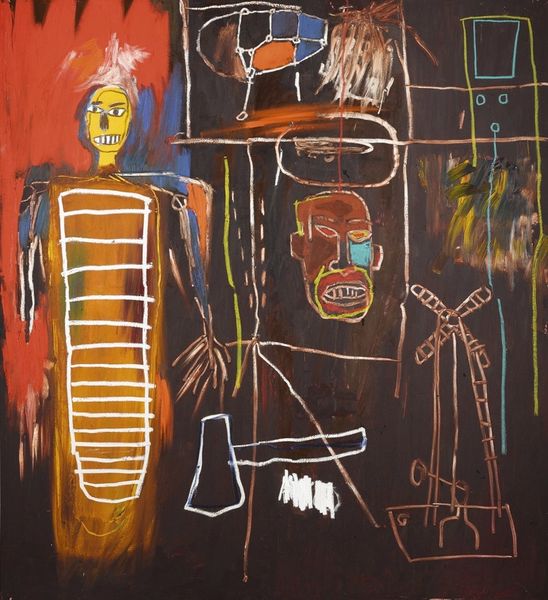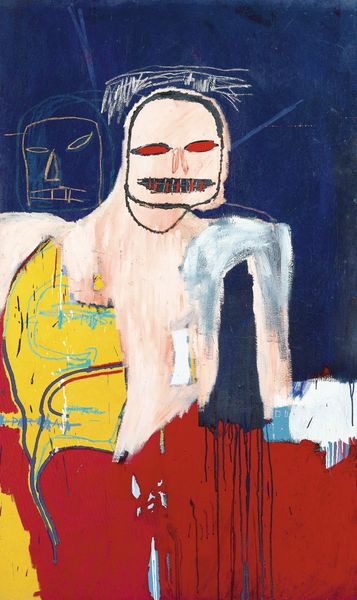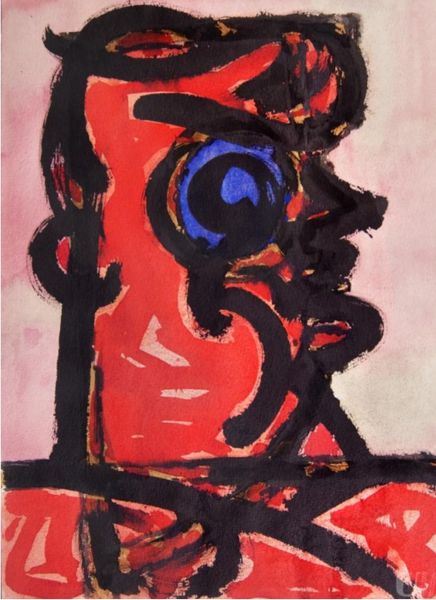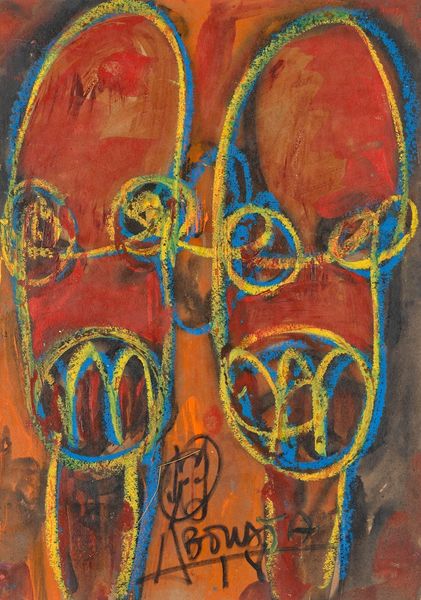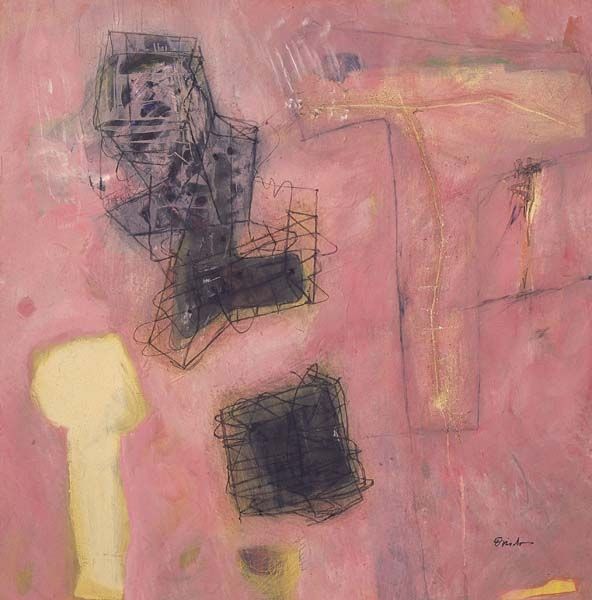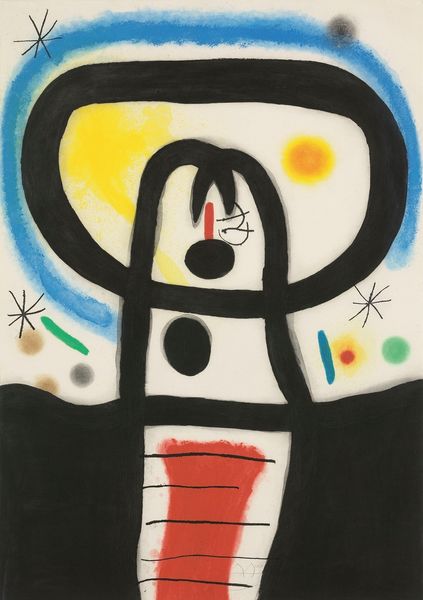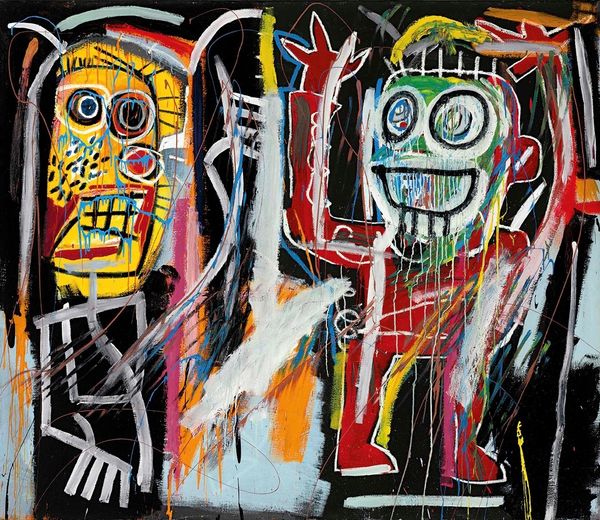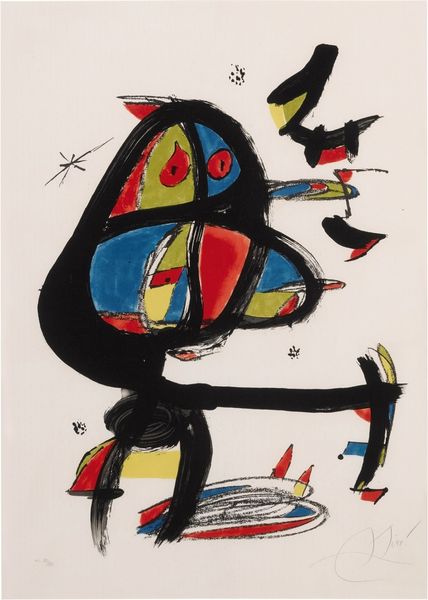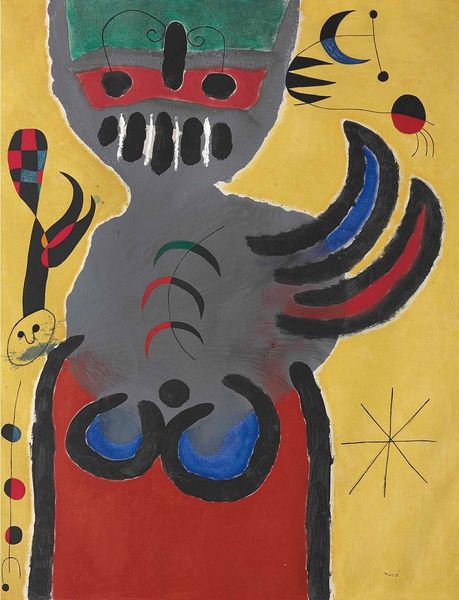
Copyright: Modern Artists: Artvee
Editor: Here we have Jean-Michel Basquiat's "Spike," a mixed media painting from 1984. There's something about the figure that’s both frightening and vulnerable. What do you see in this piece? Curator: I see a powerful assertion of identity and a visual response to socio-political realities, typical for Basquiat. The skeletal figure, painted with raw energy, becomes a potent symbol when considered within the context of racial inequalities prevalent in the 1980s. What does the aggressive posture of this figure suggest to you? Editor: Perhaps a defense mechanism? A way to appear strong despite internal vulnerabilities. Curator: Precisely. The "Spike" may represent resilience. This resonates with the broader themes Basquiat explored, challenging established art-world conventions and confronting issues of race, class, and power. Consider how Basquiat's unique visual vocabulary—a fusion of graffiti, neo-expressionism, and African art—contributed to this narrative. Editor: So, the seemingly chaotic lines and symbols actually form a carefully constructed language? Curator: Absolutely. It’s a language of resistance and reclamation. Through it, Basquiat reclaims representation. Editor: I see it differently now, thank you! Curator: And hopefully, by understanding Basquiat's context, listeners will feel more equipped to analyze similar work.
Comments
No comments
Be the first to comment and join the conversation on the ultimate creative platform.
